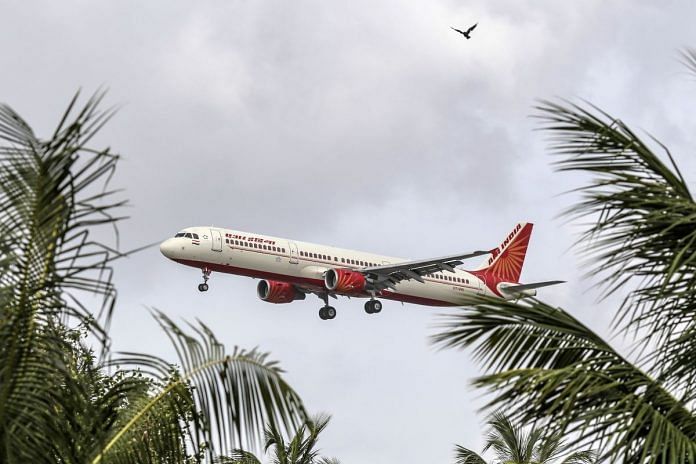Competition and aggressive pricing are stopping fares from rising to reflect higher input costs, the Federation of Indian Airlines said in a letter sent to the aviation ministry’s top bureaucrat last week and obtained by Bloomberg News. Ujjwal Dey, a spokesman for the group, confirmed the letter and its contents, but couldn’t immediately comment further.
Airlines are “facing challenging times and substantial losses in the domestic environment,” the communication addressed to Aviation Secretary Rajiv Nayan Choubey said.
Two-Cent Fares Are Killing Airlines in India’s Cutthroat Market
The plea is the latest signal of the crisis facing airlines in India, where the world’s fastest-growth in air travel has created a capacity glut that’s keeping fares below cost, while fuel prices and a weaker rupee squeeze them further. Jet Airways India Ltd., the market’s second biggest player, is struggling to stay afloat after delayed payments to staff and lessors, and is in talks with investors to raise funds.
The FIA consists of Jet, InterGlobe Aviation Ltd.’s market leading IndiGo, SpiceJet Ltd. and Go Airlines India Ltd., which together account for almost 80 percent of the domestic market.
Losses at Indian carriers will balloon to as much as $1.9 billion in the year ending March 2019, and they need to raise more than $3 billion in working capital in the near term, according to Sydney-based consultancy CAPA Centre for Aviation. Most of them have cash balances that can cover expenses for only two to three weeks, according to CAPA.
“There is a considerable cash-flow mismatch between costs and revenues earned,” the letter said, urging the aviation ministry to assist airlines in obtaining a penalty-free, one-month unsecured credit line from oil companies, as well as state-run Airports Authority of India and private airports. Carriers already receive credit from both groups on an ad hoc basis.
Smooth Ride to Defy India Carriers Despite Modi’s Jet-Tata Match
Base air fares can be as low as 1 rupee (1 cent) in India, while states charge taxes as high as 30 percent on jet fuel. Airlines are unable to pass on those costs to customers without hurting passenger growth, the FIA said. The rupee has weakened almost 11 percent this year against the dollar, driving up financing costs on overseas borrowings.
Indian carriers would need to raise fares by 12 percent to offset the double blow from fuel and currency depreciation, and their eagerness to fill seats and gain market share will prevent ticket prices from going up, according to CRISIL Ltd., the local unit of Standard & Poor’s. They are facing their worst losses in a decade, it said earlier this month. -Bloomberg







Giving ATF on credit or cutting some slack by AAI is a very temporary, partial relief. That is also how KFA started slithering to the bottom. Most costs – barring staff salaries and airport charges – are in USD, the revenues almost all in INR, so currency depreciation is a savage blow. 2. Perhaps Minister for Civil Aviation – who also “ owns “ Air India in a sense – could convene emergency meetings with major domestic airlines and try to work out how best the government can support and aid the industry at a time of distress. First on the agenda should be a gentlemen’s agreement – with the full knowledge of the CCI – that airlines will stop playing games with pricing of tickets. Never mind what it does to one player’s market share or the rate of growth of the industry, passengers must pay the true cost of air travel. That includes a recent initiative by the government to boost regional air connectivity by capping fares and creating another maze of cross subsidies. Let the industry grow at a pace where profitability and affordability can be harmonised. 3. There are similar problems in other industries, telecom for example. Agreed it is not the government’s job to tell businessmen how to run their companies profitably, but if an entire industry is tottering, placing at risk jobs, taxes and amounts borrowed from banks, the government can and should play the role of a mentor.